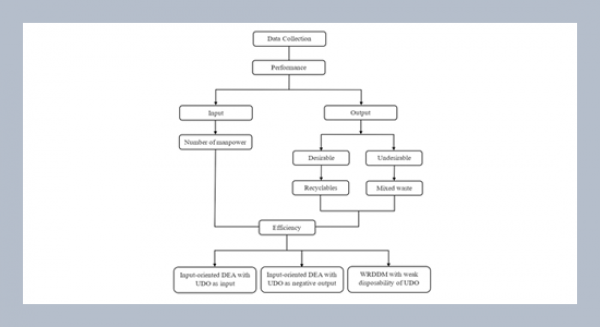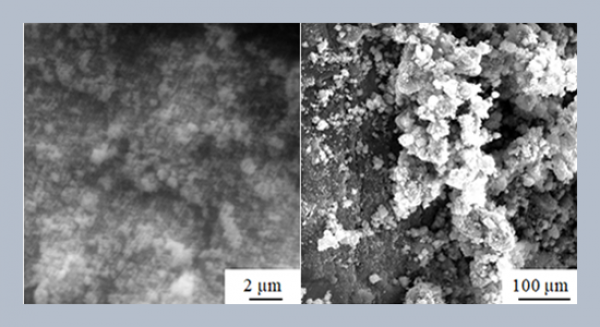REFERENCES
- [1] Aditya, G. and Chakraborty, S. 2008. Sensitivity Based Health Monitoring of Structures with Static Response. Scientia Iranica 15, 3: 267-274.
- [2] Hjelmstad, K. D. and Shin, S. 1997. Damage Detection and Assessment of Structures from Static response. Journal of Engineering Mechanics, 123, 6: 568-576.
- [3] Maia, N. M. M. and Silva, J. M. M. 2001. Modal Analysis Identification Techniques. Philosophical Transactions of the Royal Society, 359: 29-40.
- [4] Ma, G. and Eric, M. L. 2005. Structural damage identification using system dynamic properties. Computers and Structures, 83: 2185–2196.
- [5] Jinhee, L. Identification of multiple cracks in a beam using vibration amplitudes. Journal of Sound and Vibration, 326: 205-212.
- [6] Ghanem, R. and Shinozuka, M. 1995. Structural system identification I: Theory. Journal of Engineering Mechanics, 121, 2: 255-264.
- [7] Petsounis, K. A. and Fassois, S. D. 2001. Parameteric Time-Domain Methods for the Identification of Vibrating Structures-A Critical Comparison and Assessment. Mechanical System and Signal Processing, 15, 6: 1031-1060.
- [8] Caravani, P., Watson, M. L., and Thomson, W.T. 1977. Recursive Least square Time domain Identification of structural Parameters. Journal of Applied Mechanics, 44, 1: 135-140.
- [9] Masaru, H. and Etsuro, S. 1984. Structural Identification by Extended Kalman Filter. Journal of Engineering Mechanics, ASCE110, 12: 1757-1770.
- Shinozuka, M., Yun, C. B., and Imai, H.1982. Identification of Linear structural dynamic system. Journal of Engineering Mechanics, ASCE108, 6: 1371-1390.
- [11] Lus, H., Betti, R., and Longman, R. W. 1999. Identification of Linear Structural Systems Using Earth quake-induced Vibration Data. Earthquake Engineering and Structural Dynamics, 28: 1449-1467.
- [12] Angelis, M. De., Lus, , Betti.R., and Longman, R. W. 2002. Extracting Physical Parameters of Mechanical Models from Identified State-Space Representations. Journal of Applied Mechanics, 69: 617-625.
- [13] Kennedy, and Eberhart R. 1995. Particle swarm optimization. Presented in IEEE international conference on neural networks, (IV) Piscataway, NJ: 1942-1948.
- [14] Mouser, C. R. and Dunn, S. A., 2005. Comparing Genetic Algorithm and Particle Swarm Optimization for Inverse Problem. ANZIAM Journal, 46: 89-101.
- [15] Qie, H., Ling, W., and Bo. L., 2007. Parameter Estimation for Chaotic Systems by Particle Swarm Optimization. Chaos, Solitons and Fractals, 34: 654–661.
- [16] Perez, R. E. and Behdinan, K. 2007. Particle Swarm Approach for Structural Design Optimization. Computers and Structures, 85: 1579-1588.
- [17] Koh, G., Chen,Y.F. and Liaw, C. Y. 2003. A hybrid Computational Strategy for identification of Structural parameters. Computers and Structures, 81: 107-117.
- [18] Begambre, O. and Laier, J.E. 2009. A hybrid Particle Swarm Optimization-Simplex Algorithm (PSOS) for Structural damage Identification. Advances in Engineering Software, 40: 883-891.
- [19] Hesheng, T., Songtao., X., and Cunxin, F. 2008. Differential evolution Strategy for Structural System Identification. Computers and Structures, 86: 2004-2012.
- [20] Koh, G., Hong, B., and Liaw, C. Y. 2003. Substructural and Progressive structural Identification Methods. Engineering Structures, 25: 1551-1563.
- [21] Koh, C. G., Hong, B., and Liaw, C. Y. 2000. Parameter Identification of Large Structural Systems in Time Domain. Journal of Structural Engineering, 126, 8: 957-963.
- [22] Sandesh, S. and Shankar, K.2009. Damage Identification of a Thin Plate in the Time Domain with Substructuring-an Application of inverse Problem. International Journal of Applied Science and Engineering, 7: 79-93.
- [23] Tee, K. F., Koh, C. G., and Quek, S. T. 2009. Numerical and Experimental Studies of a Substructural Identification Strategy. Structural Health Monitoring, 8, 5: 397-414.
- [24] Steidel, R. F. 1978. “An Introduction to Mechanical Vibrations”. Second Ed., John Wiley and Sons, U.S.A.
- [25] Meirovitch, L. 2001. “Fundamentals of Vibrations”. First Ed., McGraw-Hill Book Company.
- [26] Nandakumar, P. and Shankar, K. 2011. Identification of Structural Parameters Using Transfer Matrix and State Vectors in Time Domain. Presented in the 5th International Conference on Advances in Mechanical Engineering, Surat, India, June 6th to June 8th , 2011.
- [27] Khiem, N.T. and Lien, T.V. 2001. A Simplified method for Natural Frequency Analysis of a Multiple cracked Beam. Journal of sound and vibration, 245, 4: 737-751.
- [28] Tuma, J. J. and Cheng, F.Y. 1982. “Theory and Problems of Dynamic structural analysis”. McGraw-Hill Book Company.
- [29] Walter, W. and Walter, D. P. 2003. “Mechanics of Structures Variational and Computational Methods”. 2nded, CRC Press.
- [30] Prashanth, P. and Shankar, K. 2008. A Hybrid Neural Network Strategy for the Identification of Structural Damage using Time Domain Responses. IES Journal Part A: Civil and Structural Engineering, 1, 4: 17-34.
- [31] Positioning strain gages to monitor bending, axial, shear and torsional available at: www.omega.com/faq/pressure/pdf/positioning.pdf















